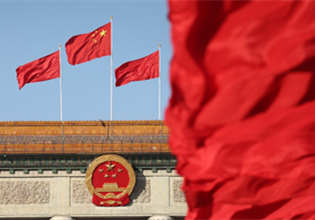Grassland aids nation's green development drive
Bearing fruit
The environment of Inner Mongolia's grasslands has improved significantly in recent years, thanks to a number of ecological projects and measures including controlling grazing and returning farmland to grassland and forest.
Home to 880,000 sq km of grassland, nearly a quarter of the country's total, Inner Mongolia has stepped up efforts to enhance grassland protection, with the average vegetation coverage of its pastures rising to 44 percent in 2018 from 30 percent in 2000, according to a report by the regional government last year.
Grazing has been banned on 680,000 sq km of grassland, and the area of land planted with grass has risen to 20,000 sq km, up from 5,233 sq km in 1980, said Mu Yuan, head of the regional forestry and grassland administration.
The autonomous region's beautiful natural scenery and improvements to its environment are attracting an increasing number of tourists, making local people more enthusiastic about protecting its grassland.
Statistics from the region's tourism department show that more than 195 million tourists visited Inner Mongolia in 2019, bringing in a total income of 465 billion yuan, up 12 percent year-on-year.
"In past decades, Inner Mongolia has witnessed a green miracle," Mu said. "In the future, we will conduct strict surveillance of the grassland via satellite remote sensing technology."
He said the forestry department will also promote the use of technology in restoring grassland and help other regions-at home and abroad-fight desertification, making the world a greener place.
"More innovative ways will be encouraged to control the sands for a better ecological system," Mu said. "We will also support cooperation between organizations in Inner Mongolia and other regions."



 Print
Print Mail
Mail





